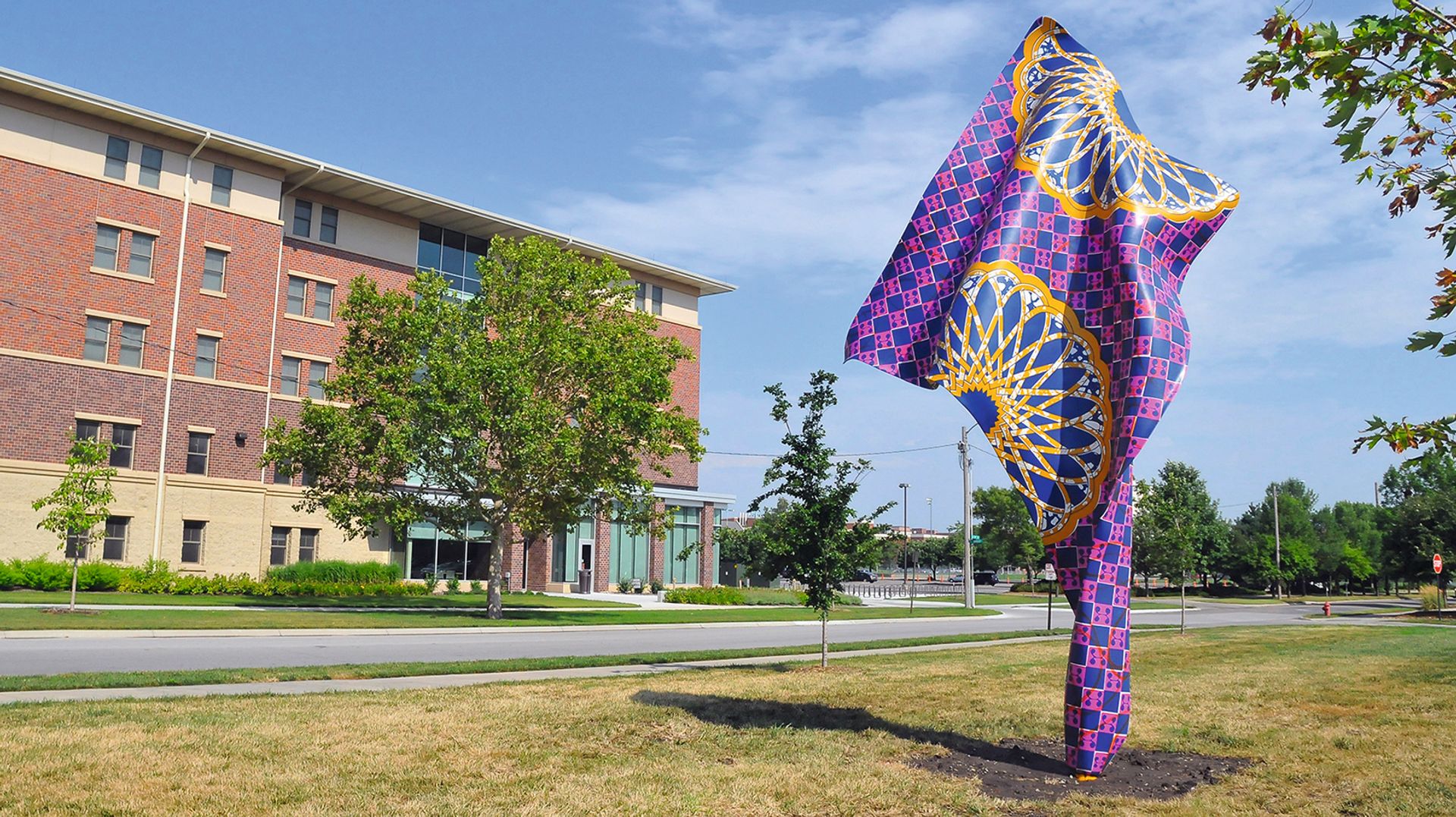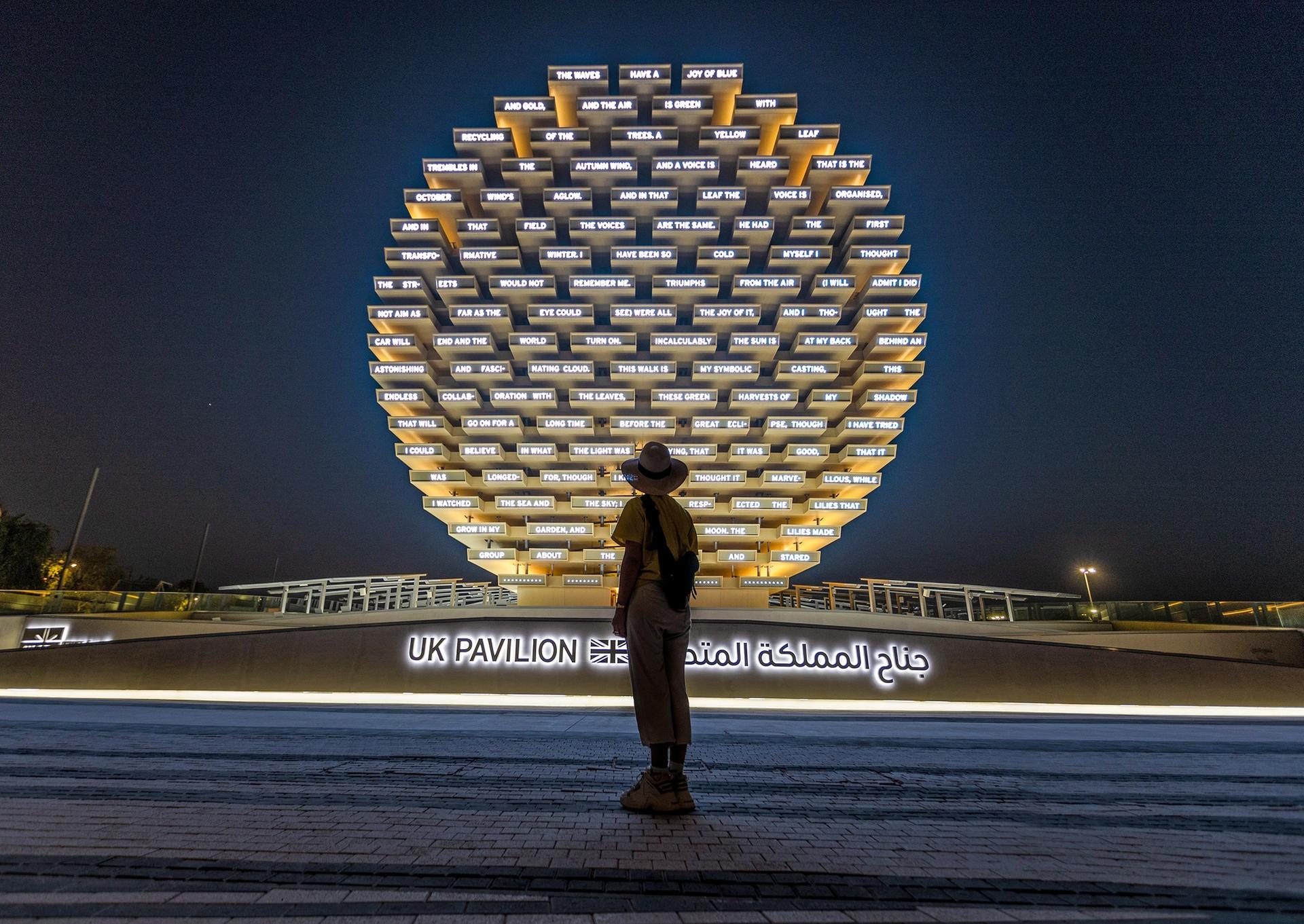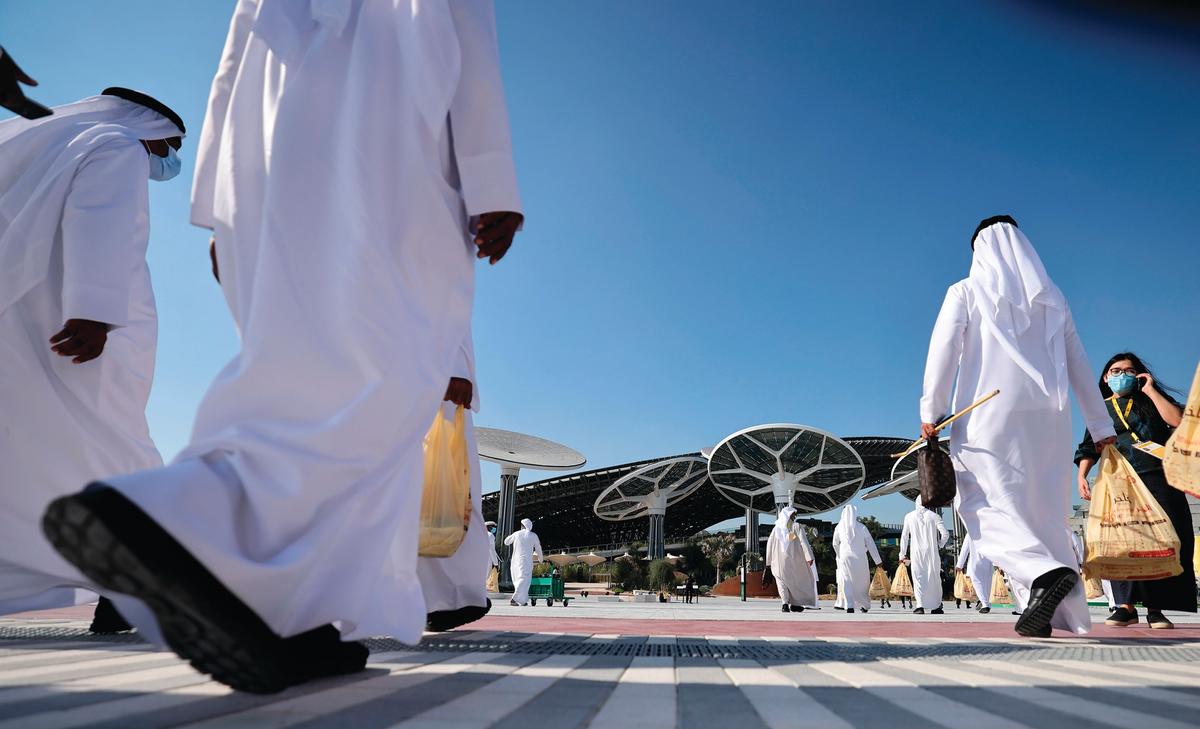With laser lightshows, an estimated $18bn budget, and long-deferred excitement, Expo 2020 Dubai finally launches this week, with pavilions for the 191 countries in the world (1 October-31 March 2022, opening ceremony 30 September).
But in an art context, its most significant legacy might be after the fanfare dies down. When Expo closes at the end of March, it will become District 2020, a large-scale, real-estate investment in the south of Dubai. Around 80% of the built Expo will transition into residential, business and commercial developments. This includes the art: Expo’s commissioned works of art will remain as permanent sculptures.
“Expo is building a new community in the district, and I wanted contemporary art, with its concepts, language and aesthetics, to be part of the public life,” says Tarek Abou El Fetouh, the curator of Expo 2020. “These works will be literally in the squares and streets. They were designed so that people could touch them, sit on them, and in some cases walk on them.”
Abou El Fetouh has selected 11 artists for his programme: a mix of local artists including Abdullah Al Saadi and Mohamed Ahmed Ibrahim—both members of the storied “Five” who were among the UAE’s first conceptual artists—and international names including Haegue Yang, Olafur Eliasson and Yinka Shonibare. These works, all but one a commission, will be spread out across Expo’s three districts and two parks.
Cosmic art for the new district
Many of the works assume a grand and monumental scale that responds to Abou El Fetouh’s brief of looking to the cosmos to think anew about world identity. Yang creates stainless steel balls, streaming down to the floor, in an approximation of planetary bodies; the Palestinian artist Khalil Rabah recreates a means to measure latitude in three enormous geometric forms. A selection of emerging artists has also been put together by the curators Munira Al Sayegh and Mohammed Al Olama.
The works were created with their future role in District 2020 in mind. The Dubai-based Shaikha Al Mazrou’s marble sculpture, The Plinth, will function in a similar way to London’s Fourth Plinth in Trafalgar Square, hosting future artist commissions via an open call that will be judged by herself and Abou El Fetouh. A manifesto collectively written with local artists and curators defines the parameters (“No horses!”, she says), and she sees the work as continuing a dialogue with the ideas of Expo after it becomes District 2020.

Yinka Shonibare’s Wind Sculptures are a metaphor for migration or the natural movement of people © Yinka Shonibare CBE
“Expo features a global world in one city,” she says. “That is a feat of staging and narration, and I wanted the idea of presentation to feature within the work.”
Expo’s idea of globalism has particular meaning in Dubai, where roughly 85% of residents hail from elsewhere, or grew up in the UAE as non-Emirati passport holders. Shonibare’s Wind Sculpture III—patterned fabric made of steel and fibreglass that appears to be arrested in mid-air—underlines the multi-layered construction of national identities. The design on the fabric is associated with African cultures, but it derives from Indonesia and was sold back to the African public, following trade routes and patterns of migration that pass through the Arabian Sea.
“Most of us move around the world,” Shonibare says. “If you fly, there is wind involved, and if you come by boat, there is wind involved. These sculptures are a metaphor for the natural movement of people: migration.”

The UK's Poem Pavilion by Es Devlin at Expo 2020 is shaped like a giant wooden conical musical instrument. It gathers words donated by each visitor and uses an advanced machine learning algorithm to generate the cumulative collective poem that illuminates its 20m-diameter facade. Photo: Alin Constantin Photography; courtesy of Es Devlin
Urban planning
Although its focus is on economic development, Expo also comprises cultural programming by national pavilions and other local stakeholders. The art and culture district Alserkal has launched a series of talks on the climate and sustainability called Cultures in Conversation, in partnership with Expo. It is one of the first public projects by Alserkal Advisory, the recently launched consulting arm of Alserkal.
The decision to incorporate Expo’s art programme within the future District 2020 demonstrates how culture is being marshalled in urban planning in the Gulf, particularly in new designs for pedestrian-friendly areas. In Saudi Arabia, where investment in culture is occurring on a massive scale, mixed-use development is often built into the planning around new biennials and museums. New “cultural districts” are understood to be in the works in the Ad Diriyah area that will be home to the Riyadh Biennial and numerous museums. These will no doubt profit from their proximity to the art offerings, adding an upmarket sheen to the areas—and, developers hope, attracting those expat (and local) residents who might otherwise complain that there is no culture in the Saudi capital.
For Abou El Fetouh, the opportunity to commission public works of art on such a scale was exceptional, he says. He has long thought creatively about how to integrate art into the public sphere, in his former role as curator of Abu Dhabi Art’s public art programme, Durub Al Tawaya, and elsewhere. He is currently on the working group for the next Sharjah Biennial.
“Public art is lacking not only in the [Middle Eastern] region but everywhere,” he says. “When you see the visual language of Shaikha Al Mazrou next to Haegue Yang, something will happen. And we don’t know what will happen in the future. Will people give the artworks other titles? Use them differently? They’re going to belong to the people.”


